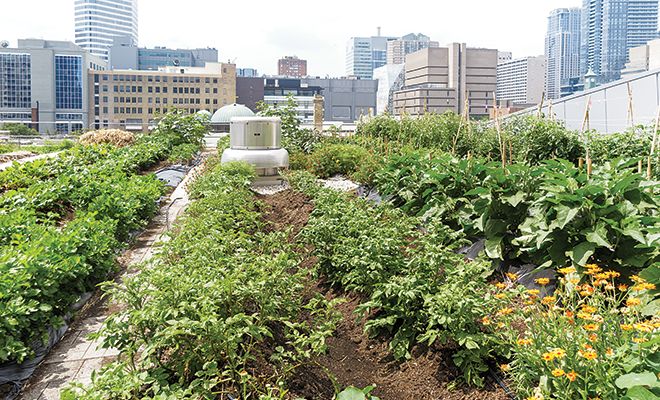
Sustainable Agriculture: Creating a Global Food Safety Net
The stated goal of sustainable agriculture is to help satisfy the world’s demand for food while protecting the environment for future generations.
I t espouses methods that protect both animal and human communities, avoiding the use of harmful chemical pesticides and fertilizers while promoting better working conditions for farm workers. In addition to protecting the environment and the quality of life for farmer communities, sustainable agriculture aims to be economically profitable in order to serve as a replacement for industrial farming.
The world’s steadily increasing population demands an ever-increasing supply of food. Here are some of the trends in sustainable agriculture that will help meet future challenges in growing and distributing food.
A Sea of Greenhouses
Nearly 20 years ago, the small European nation of the Netherlands made a major commitment to support the production of “twice as much food using half as many resources.” Since then, Dutch farmers have reduced their dependence on water by as much as 90 percent and nearly eliminated the use of chemical pesticides by moving their crops into climate-controlled greenhouses. Former farmlands now shimmer with the reflective surfaces of vast greenhouses that stretch across the Dutch landscape. Mechanized drones and robotic farm equipment help farmers monitor the condition of each individual plant, a practice known as “precision farming.”
The boost in farm productivity has been astounding. Despite being located less than one thousand miles from the Arctic Circle, the Netherlands is the world’s top exporter of potatoes and onions, with crop yields two to three times higher than world averages per acre. According to National Geographic, more than one-third of global vegetable seeds traded commercially originate in the Netherlands. This small country has set the bar for large-scale sustainable farming.
The Rise of the Urban Farm
When you hear the phrase “urban farming,” you may picture a school or community garden, or maybe a restaurant with a rooftop garden that supplies the kitchen. While these farms may not be as impressive as Holland’s greenhouse farms, they all contribute to the sustainable agriculture movement. According to the United Nations Food and Agriculture Organization, produce grown on urban farms and sold or consumed locally helps the environment by requiring less transportation and refrigeration. Because it can be sold more quickly after being picked, it’s fresher and more nutritious when delivered to customers.
FAO also reports that urban farms can actually be more productive than their rural counterparts, with garden plots showing up to 15 times higher yield than rural holdings. Although the U.S. Department of Agriculture currently doesn’t track the number of urban farmers in the country or their crops, the organization recently published an Urban Agriculture Toolkit to provide guidance on starting up and managing an urban farm. This is a promising sign that urban farms will receive more recognition and support in the years ahead.
Agritourism: A Boost for Small Farmers
It can be hard to make ends meet on a small farm dedicated to sustainable agriculture. Agritourism helps farmers add a new source of revenue: charging customers to observe or take part in the farming operation. Examples of agritourism ventures include corn mazes, Christmas tree farms, pick-it-yourself operations and winery tours. There are farm-based bed-and-breakfasts, also known as farm stays, where guests can experience the rural lifestyle firsthand. According to The New York Times, the growing trend appeals to city dwellers who want to learn more about where their food comes from and how farmers live.
Besides providing additional revenue streams, agritourism can be a direct marketing tool that brings customers to a farm’s product instead of the other way around. Agritourism also benefits the local community by providing jobs and attracting visitors to the area. In some cases, an agritourism business can make a difference in the survival of a farm. Bonnie Swank, who runs a corn maze and haunted house each fall on her vegetable farm in California, told The New York Times that the attraction generates about a quarter of the farm’s annual revenue during the six weeks it operates.
Organic Food Trends
With the growth of interest in veganism and plant-based proteins, consumer demand for organic food is at an all-time high. USA Today reports that American shoppers spent more than $43 billion on organic offerings in 2015, a growth of almost 10 percent over the previous year. Among the hottest trends are non-GMO, gluten-free and probiotics that support “gut health.”
Although the organic food movement began with small farms and businesses, many large food companies and grocery-store chains are getting on board with organic brands. With food providers of all sizes paying more attention to consumer demand, the organic food market is poised to move from specialty niche to mainstream within the next few years. ■
Sources: cnbc.com, fao.org, nationalgeographic.com and nal.usda.gov.







